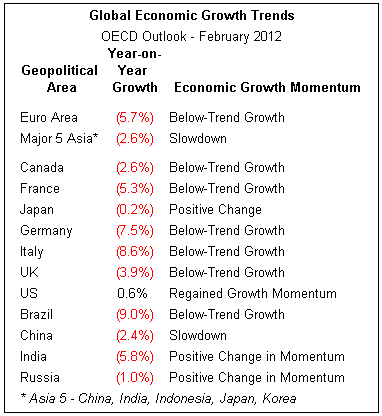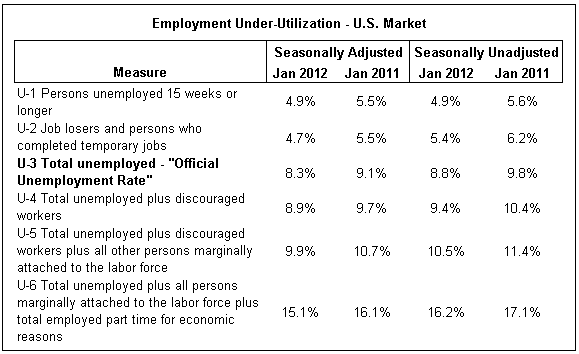IDEX Online Research: Global Economic Growth Momentum Turns Positive
February 23, 12
(IDEX Online News) – Composite Leading Economic Indicators (CLI) in February points to a positive change in momentum for major geopolitical entities, according to the OECD. Previously, there has been little overall change in the Composite Leading Indicators, most of which were in negative territory.
The Composite Leading Indicators’ positive momentum is being driven primarily by the
Unfortunately, the Composite Leading Indicators for the Euro Area and
The following table summarizes the economic growth cycle outlook for some key diamond consuming nations around the world as well as other nations whose demand helps drive growth for the global jewelry industry.
 Source: OECD |
The politicians in
However, an analysis of the data, while showing some improvement, masks some underlying trends.
Here is the full story:
· 8.3 percent – This is the number that the media publishes when reporting unemployment, and that is the number the politicians watch. For economists, this is just one number – dubbed U-3 – that is used to measure economic vitality. This number is the “total unemployed, as a percent of the civilian labor force.” One year ago, the “official unemployment level” in the
Approximately 10.5 percent of all Hispanic workers are unemployed, while 13.6 percent of all Blacks are unemployed. About 7.4 percent of all White workers are unemployed. Based on the demographics of the typical jewelry shopper in the
The three largest occupations with double-digit unemployment are construction, leisure and hospitality, and agriculture workers. All other occupations have single-digit unemployment levels.
During 2011, 13.7 million people in the
· 15.1 percent – This number, known as U-6, represents the “total unemployed plus all persons marginally attached to the labor force, plus total employed part time for economic reasons.” In short, this includes unemployed and under-employed workers. It was 16.1 percent a year ago; it has shown improvement, but not by much.
· 9.9 percent – This number, known as U-5, represents “total unemployed plus discouraged workers plus all other persons marginally attached to the labor force.” A year ago, it stood at 10.7 percent.
· 4.9 percent – This number, known as U-1, is the number of people “unemployed 15 weeks or longer, as a percentage of the civilian labor force.” It stood at 5.5 percent a year ago.
The table below summarizes the six key measures of unemployment in the
